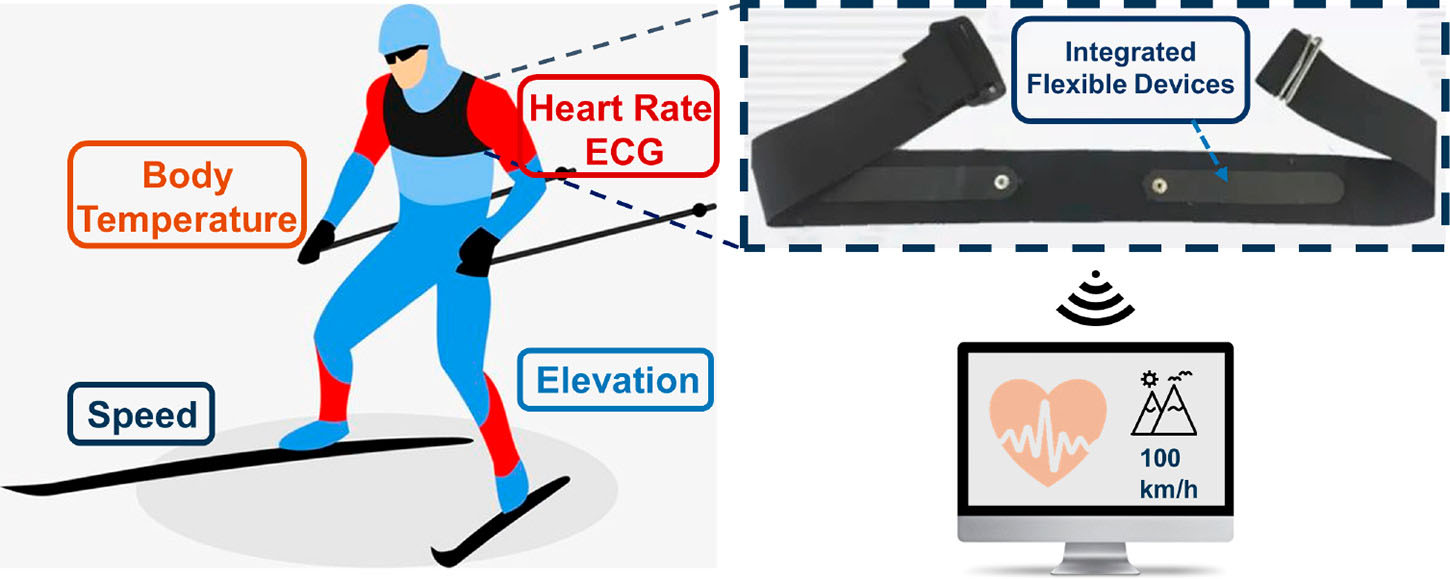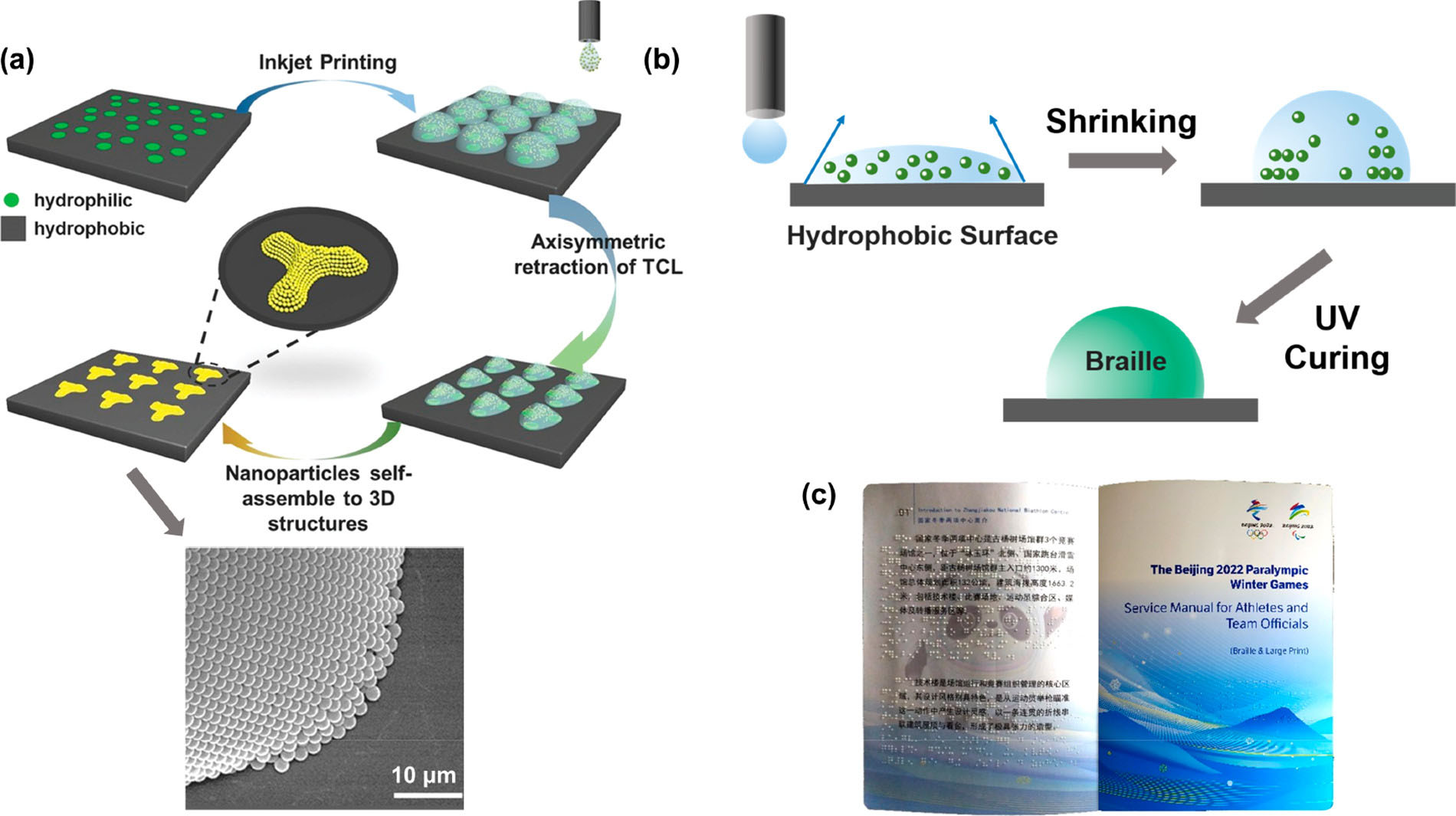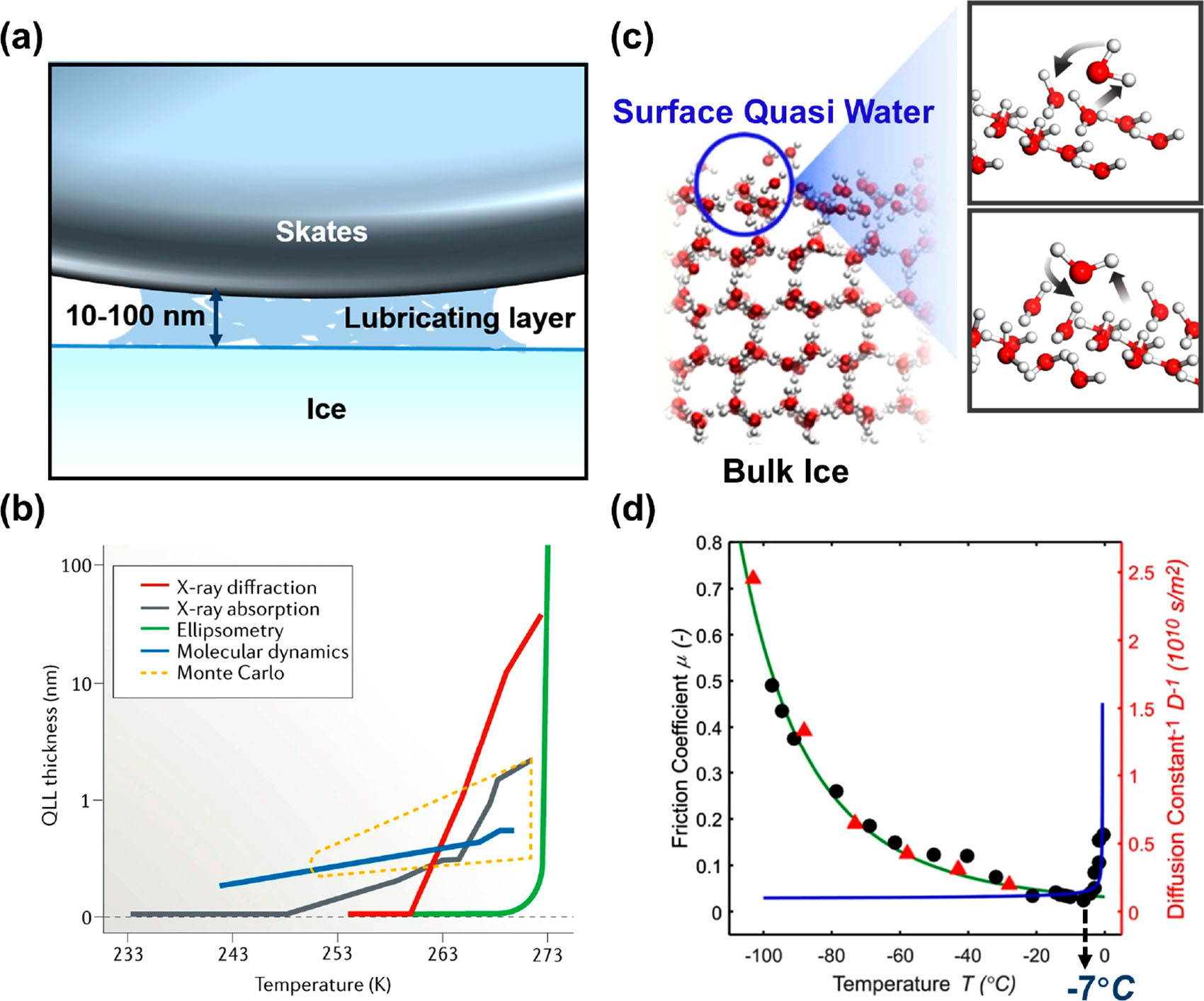| Apr 25, 2022 | |
Nanotechnology in the Olympic Winter Games |
|
| (Nanowerk Spotlight) Modern sports equipment often appears to be a showcase for new material technologies and nowhere has this been more true than in global sport competitions from sailing, racing and biking to skiing, golfing and tennis. | |
| High-tech materials help designers and manufacturers to improve their sports equipment through various performance characteristics such as increased hardness, reduced weight and enhanced strength-to-weight ratio, reduced friction, enhanced durability, and improved wear resistance (read more in our previous Nanowerk Spotlight: "Nanotechnology in sports equipment: The game changer"). | |
| A great example is the Tour de France, the famous annual bicycle race. Miguel Indurain rode the last steel framed bike to victory in the 1994 Tour De France. The frame of his Pinarello Banesto weighed 2.4 kg (with 790 grams, the frame of the Colnago V3Rs Capsule Collection of the 2021 winner Tadej Pogačar weighed less than one third of that). Carbon fibers have become the materials of choice for modern racing bikes. Their frames are at least 32% lighter, 25% stiffer and 20% more aerodynamic than their metal predecessors. These improvements would make a rider on average 0.5km/h faster for the same energy output. | |
| In other sports, where winning margins are often measured in fractions of a second, high-tech materials become ever more important for top athletes and can make the difference between winning and losing a competition. | |
| Just take a look at the recent 2022 Winter Olympics in Beijing. The winner in the men's giant slalom won by 0.19 seconds. The winner of the women's downhill competition with a distance of 2.7 km was even smaller – 0.16 seconds. Other events had similar minuscule winning margins: bobsleigh (4-man) at 0.49 seconds; luge (doubles) at 0.1 seconds... the list of winners with extremely small margins is long. | |
| Some of the high-tech materials used by athletes in competitive winter sports are using nanomaterials. But, as the 2022 Beijing Winter Olympics has shown, other areas have benefited from nanotechnologies and nanoscience as well: ice skating, wearable monitoring devices, and even nanomaterial-based Braille printing of Olympic service manuals and spectator guides for vision impaired readers. | |
| Some of these advances have been highlighted in a recent article in ACS Nano ("Nanotechnology in the Olympic Winter Games and Beyond"). | |
Skiing equipment |
|
| To achieve advanced functions like anti-UV or anti-fogging, nanotechnologies are extensively used to functionalize ski goggles. Most of the reflecting coatings are several hundreds of nanometers thin and are made of inorganic materials such as MgF2 or SiO2 and most of them are produced using Physical vapor deposition (PVD) and chemical vapor deposition (CVD). | |
| Two additional nanolayers are applied as well: UV protection, for instance in form of inorganic semiconductor nanoparticles such as ZnO; and anti-fogging treatments in form of increased hydrophilicity of the internal surface of ski goggles. This is achieved either through an application of hydrophilic inorganic nanoparticles (mostly SiO2 and TiO2) onto the goggle surface or reactive ion etching (RIE) or nanoimprinting. | |
| The skis themselves benefit from high-performance base materials in their construction and ski wax applied to the bottom of the skis. | |
| In the manufacture of the ski bases, ultrahigh molecular weight polyethylene (UHMWPE), a crystalline polymer, is widely used. In its crystal, the polymer chain folds and aligns neatly, forming lamellas with a thickness of 10−50 nm. Compared to high-density polyethylene, this crystalline nanostructure dramatically increases the mechanical properties of UHMWPE, providing it with superior wear resistance, self-lubrication, high strength, and strong anti-aging properties. This makes the ideal material for the base of skis because it can meet the requirements of both low friction coefficient and wear resistance. | |
| One manufacturer is using carbon nanotubes to ensure low mass and high torsional rigidity. (La Sportiva Vapor Nano and Vapor Float). | |
| Ski wax applied to the bottom of skis improves the friction performance under different snow conditions. A water layer exists between the skis’ base and the snow during skiing. Skis with ski wax become more hydrophobic, which helps to reduce the friction between skis and snow, thereby increasing the speed of athletes. | |
| Silica nanoparticles and carbon nanotubes are applied as additives in ski wax for hydrophobicity enhancement – hydrophobicity is related to the topology of the surface nanostructure – and friction reduction through surface nanostructures that improve surface roughness. | |
| The crucial consideration here is that the surface roughness increases on the nanoscale, which can reduce friction between the ski's base and snow, and not on the macroscale, which would increase friction. | |
Wearable sensors |
|
| Specifically for the 2022 Olympic Winter Games, Prof. Xue Feng’s team at the Center for Flexible Electronics Technology, Tsinghua University, developed a wearable flexible electronics device for cross-country skiing athletes to monitor physiological signals during training. | |
| They fabricated a chest strap integrating a flexible temperature sensor, flexible electrocardiograph (ECG) sensor, Bluetooth 4G data transfer host, and conductive flexible fabric electrode. | |
 |
|
| Schematic diagram of wearable monitoring (heart rate, ECG, body temperature, speed, and elevation) device system. (Reprinted with permission by American Chemical Society) | |
| The device continuously collects an athlete's heart rate, ECG, body temperature, speed, and elevation information and returns these signals to the visualization system through its own 4G module. In this way, important data such as the athlete’s physiological information, position information, and speed information can be monitored in real time. | |
| With the development of nanotechnology, especially stimuli-responsive, conductive nanomaterials, and functional nanostructures, these monitoring devices will become thinner, more sensitive, and more integrated – ultimately we'll see tattoo-like skin biosensors. | |
Printing services |
|
| The 2022 Winter Olympics and the 2022 Winter Paralympics employed The Green Printing Braille Technology, developed by Prof. Yanling Song’s research team from the Chinese Academy of Sciences (read our Nanowerk Spotlight on the scientific basis: "Assembling nanoparticles into 3D structures with one microdroplet"). The 2022 Winter Olympics and the 2022 Winter Paralympics employed The Green Printing Braille Technology, developed by Prof. Yanlin Song’s research team from the Chinese Academy of Sciences (read our Nanowerk Spotlight on the scientific basis: "Assembling nanoparticles into 3D structures with one microdroplet"). | |
| Song's team printed the spectators' guide for the Beijing Olympic and Paralympic Winter Games, service manual for athletes and team officials, introduction book for the National Biathlon Centre and inspection terms for anti-doping, which have large-print and Braille versions. | |
| The antibacterial nanomaterial used in this printing is able to form a film after penetrating the surface of the paper, and it firmly attaches to the paper so that dots printed through the material are abrasion-resistant. | |
| The braille is fabricated by controllable 3D microstructures from droplets containing nanoparticles and curable resins on a hydrophobic substrate via inkjet printing. The unique advantages of this technology include round and smooth braille, the realization of figure printing, and the capability with a wide scope of substrates. | |
 |
|
| (a) Schematic inkjet printing process of controllable 3D microstructures, and SEM image showing the assembled morphology of nanoparticles in a microdroplet. (b) Schematic braille printing process. (c) Olympic printing produced by the Green Printing Braille Technology. (Reproduced with permission from by John Wiley and Sons) (click on image to enlarge) | |
Ice Skating |
|
| One interesting – and more wonkish – aspect of the 2022 Games' ice skating competitions was informed by nanoscience – Why is the ice surface so slippery? | |
| By now it is widely accepted that ice-skating is enabled by the formation of an extremely thin water layer on the surface of the ice, which lubricates the skate. But there are still remaining debates about the origin of the water layer: is it a result of surface melting, pressure-induced melting, or friction heating generated by the skate? | |
| Current explanations suggest that the surface water layer is more possibly an intrinsic phenomenon of ice as a result of surface pre-melting. This water layer is also called quasi water and its thickness varies between 1 and 100 nm, depending on the temperature and the used measuring technologies. | |
| Since the liquid layer mainly comprises layers of water molecules at the nanoscale, its friction property differs from bulk water, which exhibits poor lubrication. Recent research (Physical Review X, "Nanorheology of Interfacial Water during Ice Gliding") shows that this liquid layer has both viscous and elastic responses to an object sliding on top of it, leading to an excellent lubricating property. | |
 |
|
| (a) Schematic diagram of the contact between skates and ice surface. (b) Surface dynamic simulation on an ice surface. (c) Thickness of the liquid layer obtained by X-ray diffraction, X-ray absorption, ellipsometry, and two computer simulation approaches. (d) Friction coefficient of ice at different temperatures. (Reprinted with permission by American Chemical Society) | |
| Notably, the thickness of the surface liquid layer and their lubricating property is influenced by temperature. At high temperature, the thickness of the liquid layer increases dramatically and exceeds the nanoscale, resulting in a lubricating property close to bulk water. However, low temperatures are not always a benefit because the liquid layer almost vanishes at extremely low temperature, and the direct contact of skates with solid ice surface results in increased friction coefficient. | |
| Scientists found that on the basis of the correlation between the friction coefficient with temperature, the ice surface is the most slippery at −7 °C, which is why the 2022 Winter Olympics organizers kept it at exactly that temperature. This could be one of the reasons why the ice in this Olympics has been more slippery than in previous games, and why a large number of world records in the ice-skating field have been broken but also a larger number of falls occurred. | |
 By
Michael
Berger
– Michael is author of three books by the Royal Society of Chemistry:
Nano-Society: Pushing the Boundaries of Technology,
Nanotechnology: The Future is Tiny, and
Nanoengineering: The Skills and Tools Making Technology Invisible
Copyright ©
Nanowerk LLC
By
Michael
Berger
– Michael is author of three books by the Royal Society of Chemistry:
Nano-Society: Pushing the Boundaries of Technology,
Nanotechnology: The Future is Tiny, and
Nanoengineering: The Skills and Tools Making Technology Invisible
Copyright ©
Nanowerk LLC
|
|
|
Become a Spotlight guest author! Join our large and growing group of guest contributors. Have you just published a scientific paper or have other exciting developments to share with the nanotechnology community? Here is how to publish on nanowerk.com. |
|
